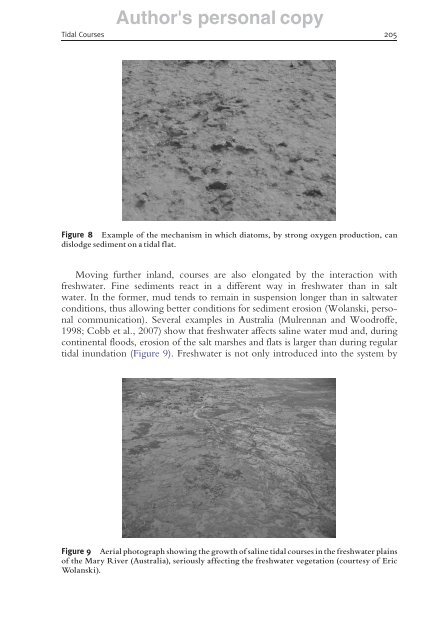Chapter 6 - Tidal Courses: Classification, Origin and Functionality
Chapter 6 - Tidal Courses: Classification, Origin and Functionality
Chapter 6 - Tidal Courses: Classification, Origin and Functionality
Create successful ePaper yourself
Turn your PDF publications into a flip-book with our unique Google optimized e-Paper software.
Author's personal copy<br />
<strong>Tidal</strong> <strong>Courses</strong> 205<br />
Figure 8 Example of the mechanism in which diatoms, by strong oxygen production, can<br />
dislodge sediment on a tidal flat.<br />
Moving further inl<strong>and</strong>, courses are also elongated by the interaction with<br />
freshwater. Fine sediments react in a different way in freshwater than in salt<br />
water. In the former, mud tends to remain in suspension longer than in saltwater<br />
conditions, thus allowing better conditions for sediment erosion (Wolanski, personal<br />
communication). Several examples in Australia (Mulrennan <strong>and</strong> Woodroffe,<br />
1998; Cobb et al., 2007) show that freshwater affects saline water mud <strong>and</strong>, during<br />
continental floods, erosion of the salt marshes <strong>and</strong> flats is larger than during regular<br />
tidal inundation (Figure 9). Freshwater is not only introduced into the system by<br />
Figure 9 Aerial photograph showing the growth of saline tidal courses in the freshwater plains<br />
of the Mary River (Australia), seriously affecting the freshwater vegetation (courtesy of Eric<br />
Wolanski).




